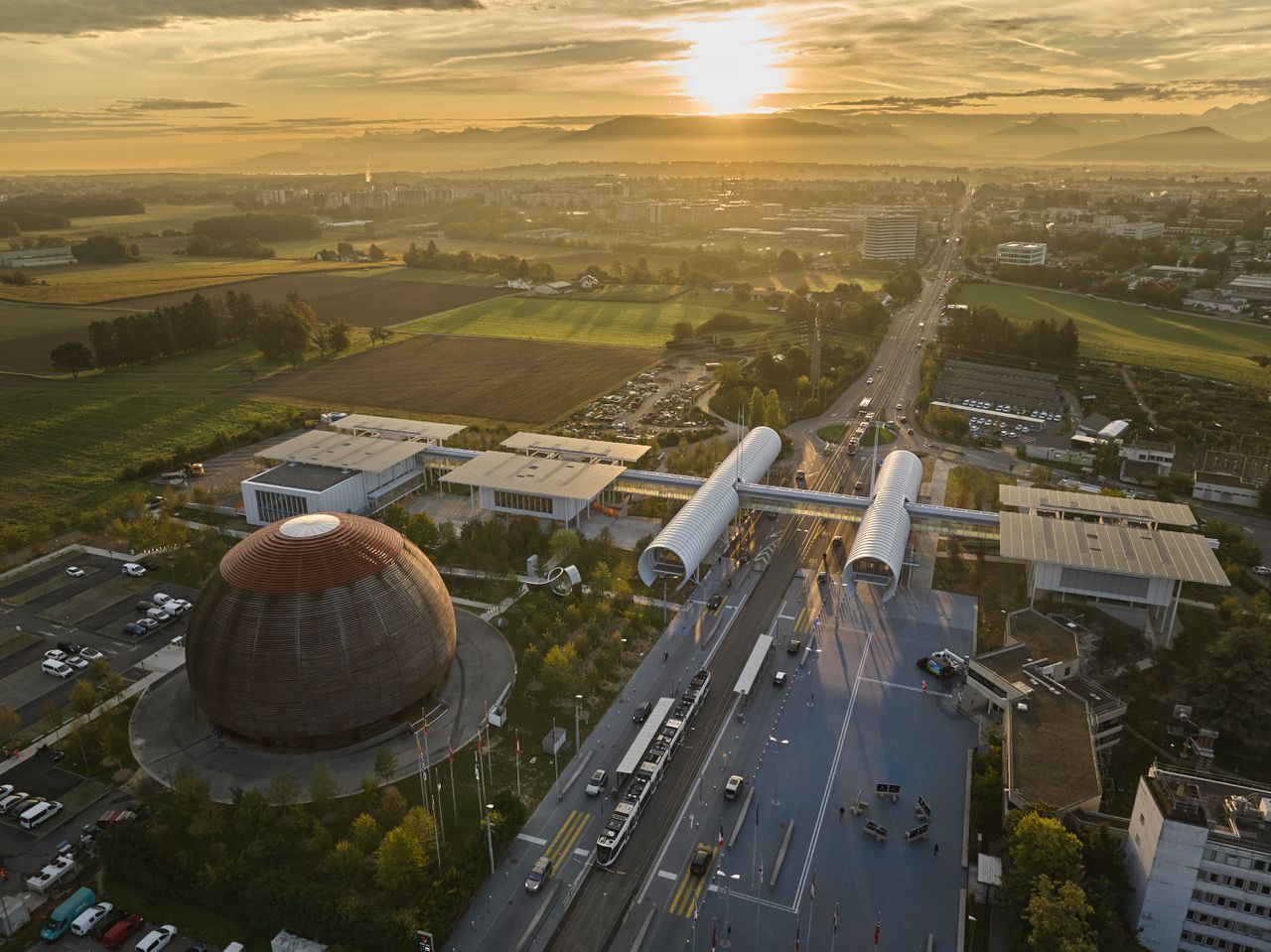Science Gateway: opening the door to CERN and its research
New visitor centre is accessible, carbon neutral and packed with science

Western Switzerland has added a new tourist attraction to its list: the new CERN "Science Gateway" visitor centre, and it's a real eye-catcher from an architectural point of view as well. The European Organization for Nuclear Research (CERN) in Geneva has long been one of the most popular tourist destinations in French-speaking Switzerland. In recent years, demand had been so great that CERN was far from being able to meet all the visit requests. The new Science Gateway is now set to put things right: CERN hopes that from now on everyone will be catered for with a capacity of 300,00 to 500,000 visitors per year and activities for pre-school children and upwards. It was officially opened on 7 October in the presence of President Alain Berset.
In the last few years some 8000 square metres of Science Gateway have grown up around the "Globe" opposite the CERN main entrance, designed by star architect Renzo Piano Design Workshops. The Globe of Science and Innovation, previously the focal point for groups of visitors and one location of the permanent CERN exhibition, had been a gift from the Swiss Confederation to CERN and originally stems from the Swiss National Exhibition in 2002. Within a very short time, it has become a symbol of CERN and will in future be the venue for temporary exhibitions and events. And it is not only buildings that have grown here, but also an entire forest - part of the goal of making Science Gateway completely carbon neutral.
The architecture of the new building of the Science Gateway seeks to combine the inside with the outside. Large windows in the new auditorium, which can hold almost 1,000 people, offer a view onto the science forest, and the tunnel-like tubes that house the exhibition float above the ground, as if not to take away any space from nature while at the same time visually evoking the LHC tunnel. Exhibitions in two of these tubes explain to visitors not only how science is done at CERN, but also why – in a way that is easy to understand and as immersive and accessible as possible. Real parts of particle detectors, a working particle accelerator, exhibits to try out and handle, the history of the universe since the Big Bang - all this is featured in the exhibitions. The tubes are complemented by art-meets-science projects, an exhibition on quantum physics where visitors can play at being particles themselves, science shows and experimental laboratories.
Key ideas, individual exhibits and texts introducing the different exhibitions have been systematically evaluated while they were being developed by a large team of experts from CERN in collaboration with other institutions and universities. Enter Daria Dvorzhitskaia, PhD student at the Institute for Communication and Media Research (IKMZ) at the University of Zurich. As a science communication researcher, she has tested content foreseen for the exhibitions with groups of prospective visitors, including school students, checking whether the content is understandable and interesting for them. "Together with the CERN community and many external experts, our team worked hard to make Science Gateway exhibitions feel welcoming to our diverse visitors," the PhD student says. A lot of emphasis was placed on making the exhibitions accessible and inclusive. "Our goal was to ensure that in each exhibition everyone finds something they can engage with and enjoy. For example, alongside interactive multimedia games and authentic CERN objects, there are also tactile elements specially developed for blind and visually impaired visitors," she explains. For her thesis, she is now looking forward to systematically exploring the outcomes of a visit to CERN Science Gateway. She is particularly interested in the interactions between visitors and members of CERN community, who will be present in the exhibitions to engage with the public.
According to CERN, no taxpayers' money has gone into the CHF 100 million project - it is financed entirely by donations. The largest sponsor is the Stellantis Foundation, but Swiss organisations such as the Ernst Göhner Foundation, Loterie Romande, Fondation Hans Wilsdorf and Fondation Gelbert and other local foundations have also provided financial support for the project.
From now on, the Science Gateway will be able to welcome individual visitors and groups of visitors six days a week and provide educational entertainment with science shows every day. For the labs and visits to the research facilities, which will still be available, you need to register in advance (https://visit.cern/labs). At the weekend, visitors can also spontaneously join one of the labs. There are plenty of options here, too - from slimy detectors for the very young to building your own cloud chamber for anyone over 16. Admission is free.
Barbara Warmbein
Infobox
Science centres in Switzerland
Feel like catching up on some science? Here are some of Switzerland’s science destinations, some even featuring particle physics…
Technorama in Winterthur https://www.technorama.ch/en/home
Verkehrshaus in Lucerne https://www.verkehrshaus.ch/en/home.html
Science Pavilion of UZH https://www.sciencepavilion.uzh.ch/en.html
Einsteinhaus in Bern https://www.einstein-bern.ch/en/einstein-house
Natural History Museum in Basel https://www.nmbs.ch/home/en.html
Did you know? CERN is one of the founding member of the Swiss romande science centre network http://www.rezoscience.ch





